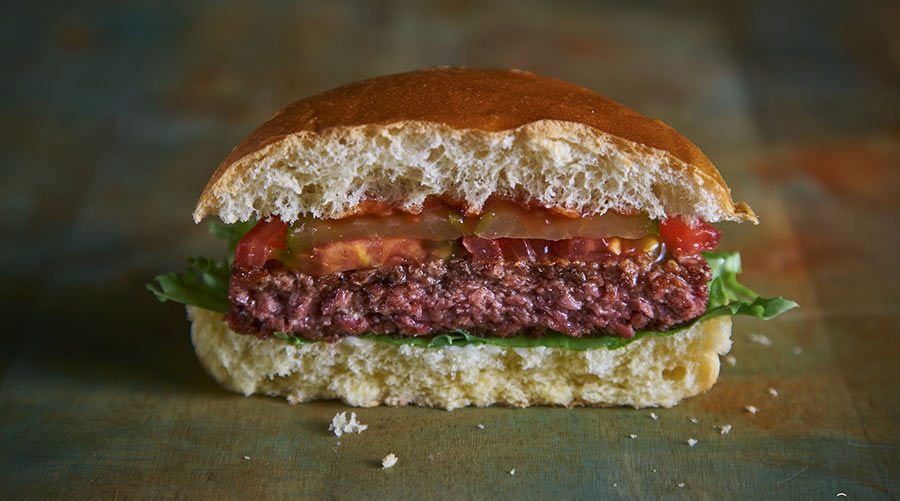The future of food production: 3D printing and gene editing
 A fake meat burger engineered in a laboratory © Tim Stewart News/Shutterstock
A fake meat burger engineered in a laboratory © Tim Stewart News/Shutterstock The food supply chain faces a different set of risk factors to those it was dealing with just 10 years ago, according to a new report, including those presented by new technologies such as gene editing and 3D food printing.
The report Evolving Risks in Global Food Supply (PDF), produced jointly by the Lloyd’s of London insurance market and the accounting and advisory firm Moore Stephens, offers an insight into the future of food production.
It highlights that food supply chains are some of the “most vulnerable, extensive and complex supply chains we have on Earth”, and new risks and threats are emerging as a result of the way the system is evolving in response to societal and economic pressures.
See also: Four food trends that will affect farming
Key factors include greater integration and consolidation within the supply chain – which offers efficiencies and greater control over processes, but also amplifies the level of risk because of the impact of any problems – is felt on a wider scale.
3D-printed foods
The report also points out that technological developments are changing the food we eat and the way in which it is produced.
Burgers made of lab-grown meat are already being sold by specialist suppliers, and the report says in future there are likely to be innovations that result in 3D-printed food products (see panel) or products resulting from genome editing of meat, fish, plants or fungi.
“The advent of genome editing brings potentially unimaginable shifts in traits of agriculturally significant species, and species not yet domesticated for widespread human use as food,” it says.
“In contrast to first-generation genetic engineering, genome editing can be done in much less demanding facilities, eventually allowing regular people working in very simple conditions to create virtually unlimited genetic variation in any organism, including humans.”
The report also suggests that it is possible to conceive future farming and food processing being undertaken with no human intervention apart from engineering set-up and maintenance.
Impact of social media
Social media is identified as another risk factor that has already brought changes to the supply chain, with online pressure campaigns motivating retailers and suppliers to change their processes and practices.
“Everyone involved in the supply chain of the products singled out on social media are left at the whim of these campaigns and can often do little to mitigate the impact,” it says.
“This is especially problematic if the objection to the product lies outside that part of the chain they control.”
Another influencing factor is the environmental concerns of consumers and governments which is likely to require serious changes to how packaging and food waste is currently handled by the supply chain.
Is 3D food printing real?
3D food printing may sound like something straight from science fiction, but it is a rapidly growing technology with the potential to go mainstream.
New printers are becoming available that can be used for various types of food materials.
These are typically paste-type materials including chocolate, vegetable and meat purees, pancake batter, cream, and cake and biscuit mixes.
The technology is capable of manufacturing product structures that cannot be achieved, or are difficult to achieve, using conventional techniques.
Food research, support and training body Campden BRI has recently begun a research project to assess and evaluate how 3D-printing applications could benefit the food industry.
The project aims to provide an objective and independent evaluation of the capabilities and limitations of 3D-printing technology through practical trials on a wide range of food materials.
